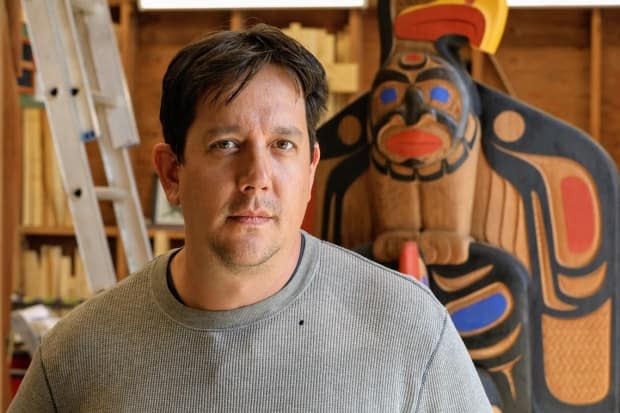Witness blanket replica tours B.C. as testament to dark legacy of Indian residential schools

Over the next year, people living in B.C.'s Interior and north will be able to view the reproduction of a large-scale art installation currently touring museums across B.C. that commemorates the legacy of Indian residential schools.
From Jan. 15 to April 10, the Kelowna Art Gallery is hosting the 12-metre long true-to-scale replica of The Witness Blanket, which was created by Kwakwaka'wakw Vancouver Island master carver Carey Newman, after which it will travel to Prince Rupert and Prince George before heading to Whitehorse.
The original spent years touring the nation but is now preserved at the Canadian Museum for Human Rights in Winnipeg. It contains hundreds of objects from Canada's residential schools, ranging from pieces of stained glass, to doors, to belts used to punish children.
The replica features the same cedar frames as the original, but instead of original artifacts it is made up of photographic panels that represent the more than 800 objects collected from 77 sites, including residential schools, across Canada.
Newman, who is also an arts professor at the University of Victoria, says he and the museum made an agreement in 2019 to become joint stewards of the Witness Blanket, and one of the projects they developed to protect the original is to reproduce it for cross-country touring purposes.
"The original blanket was travelling for about four and a half years … but the wear and tear from travel started to take its toll," he told Chris Walker on CBC's Daybreak South.
Another of the projects to preserve the Witness Blanket and make it available to remote communities is a virtual display, such as the one conducted by Camosun College on Vancouver Island in 2020.

Newman says he came up with the idea to create a quilt-like installation in 2009 to honour his father, a residential school survivor, after the Truth and Reconciliation Commission called for initiatives to commemorate the legacy of people who had experienced racism in the institutions where children weren't allowed to speak their own languages.
Kelowna Art Gallery executive director Nataley Nagy says she has been wanting to exhibit The Witness Blanket since its inception, because the artwork gives people space to think about Canada's residential school history.
"The blanket is a witness to the atrocities of the residential schools," she said on Daybreak South. "It's really important for people to have a quiet place to rest and to reflect."
More than 150,000 Indigenous children were forced into residential schools between 1870 and 1996.


